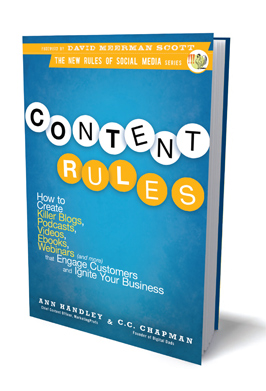You were just handed a 20-page research report with the assignment to write a headline and four-paragraph summary that will entice your target audience of business and IT executives to read it. Where do you begin?
Marketing professionals face this problem all the time. They have to take a voluminous amount of data and analysis on a topic about which they may know very little and make it not only accessible but sexy. Often they opt for the two paths of least resistance:
- Copy the executive summary verbatim.
- Use vague language to disguise the fact that they don’t understand what the report says.
It doesn’t have to be that way. With a few tricks demonstrated here, you can skim a 20-page report, identify key points and write a summary that can easily be adapted for different audiences in about 20 minutes. The key is to let the authors of the document do most of the work.
We’ll use the big data analytics study from IBM that’s embedded below as an example. The annotations I’ve made in the red boxes show some of the highlights you’ll use to create your summary (if the annotations aren’t showing up on your browser, click the link below the embed to download the PDF).
As you skim the document, look for signposts that point to important information and label them. Here are some labels I use. You can copy these or make up your own.
Key Point – Essential information for one or more of the audiences you need to reach, this is one of the two or three most important findings.
New Insight – Analysis by the report’s authors that challenges convention or indicates new ways of thinking about a trend or problem. In many cases, new insights are the principal value a research study offers.
Important Data – Statistics that support key points or that validate the quality of the research.
Takeaway – Useful information that tells how key points and important data can be put to practical use.
Summary Trend – Attitudes, practices or behaviors that research has identified are common to a large number of people or organizations and that may indicate change in the market.
Important Sub-Theme – Trends or findings that are not essential to the main topic but which are interesting nonetheless. Important sub-themes are often surprising or unintentional discoveries.
Potential Gotcha – in behaviors or beliefs usually involve risks or tradeoffs. Gotchas are what people worry about. They’re critical to story-telling because they introduce dramatic tension, which makes stuff interesting.
Outsource the Work
The secret to skimming a report without digesting it in its entirety is to let the authors do the work for you. After all, they know a lot more about the topic than you do and they want to show off their best stuff.
Don’t just copy the executive summary and walk away, though. The authors may be addressing a different audience than you are, or they may have downplayed a point that you think is really important. You still have to perform due diligence.
Look for signposts that point you to important information. Here are a few:
Executive Summary – This is what the authors think is most important, and they’re probably right. It’s critical that you read it,
Data – Look for numbers in the body of the report, percentages in particular. These may be Important Data that supports Key Points or Sub-Themes, or they could just be interesting factoids. Look in particular for percentages of 50 or more. This indicates a majority of the people surveyed agree on something.
Charts and Graphs – When the authors go to the trouble of extracting data and turning it into an image, they must think it’s pretty important. The information in charts is often critical validation for Key Points. You can extract important numbers to sprinkle throughout your summary or press release.
Callouts – Those are the paragraphs or quotes that usually appear in larger type and are set off from the rest of the text by hairlines or boxes. Page 4 of the IBM report has a callout at the bottom of the page. Callouts are commonly used to add visual variety, but the passages or quotes they contain are usually points the authors think are important.
Subheads – When done right, these denote breaks in the narrative that either take it in a new direction or organize information into categories. The subhead “Defining big data” on page 2 of the IBM study is a change-of-direciton subhead, while “The pattern of big data adoption” subhead on page 10 is the beginning of a whole subsection of the document in which the authors discuss a typical staged approach to deployment. Each subhead within that section denotes a different stage. They’re good bullet points for your summary.
Summary recommendations – Most reports conclude with a summary of the findings. Again, the authors are doing your work for you by telling you what they think matters.
Copy the sections of the report you just highlighted and paste them into a document. You now have all the important elements to work with. In my next post I’ll talk about how to boil that information down into a good summary.


